The pregnant flaws
Is it now time to create a culture in which crewmembers feel more secure about their rights regarding pregnancy while working on board? …
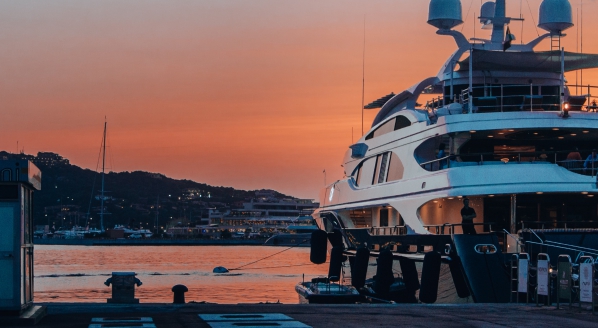
Some names have been changed to protect speakers’ identities.
Picture the scene: You are a 24-year-old junior stewardess working on board your first 45-metre motoryacht in the Mediterranean. You’ve just finished a gruelling 12-hour day on charter and you’re more than ready to wind down for the evening. You can feel the mid-season madness kicking in, and there’s only so much more time you can spend cleaning, folding and arranging before you start to thoroughly lose the plot.
You’ve been feeling a little off and tired for the past few weeks, so, on a whim, you take the white test that you had packed with you into the bathroom. The result? A clear blue line. It’s unmistakeably positive. You are pregnant. Panic sets in, and a million thoughts rush through your head all at once – the main one being “How am I going to break this news to the captain and rest of the crew? Is my career in yachting over before it has really begun?”.
A safety risk?
When one delves into the question of what happens in practice to pregnant crewmembers on board, the answer isn’t straightforward because it depends on the approach of each individual boat. When asked, crew have shared numerous stories of stewardesses being kicked off their boats as soon as they inform the captain of their pregnancies. They can be viewed primarily as an on-board health-and-safety risk and as a burden for the rest of the crew, who must pick up the slack when the pregnant crewmember is no longer deemed ‘fit enough’ to carry out their tasks.
In one particularly harrowing example, former crewmember Amelia tells of her experience of going through a miscarriage while employed as crew: “I was working on board with my partner at the time. I could feel something was not right and did some pregnancy tests. I turned out to be pregnant but at a very early stage. This was not planned, and the boat was still unaware at this stage.
“We had to process it ourselves first as we hadn’t been together that long yet and weren’t sure if we wanted to keep it [the baby]. That decision was made for us when, a week later, I started to be in a lot of pain. I told the chief stew and captain what was happening and decided to get off the boat for a few nights.
“I consulted a doctor and was told to go home and get checked properly and rest. So I did and took sick leave from the boat. It was mid-season, so this caused issues for the programme, but they quickly found a girl to replace me and all was well.”
However, when Amelia looked to return to work, her ordeal continued. “Once I had recovered and was given the green light from the doctor to go back to the boat, I was told they preferred to keep the new girl. I didn’t take it personally until I got told that it was because it had been a pregnancy and they couldn’t risk me being with my boyfriend on that boat.
“On top of that, management refused to pay me out my notice period. They tried to force me to sign an amendment to my contract, which I refused. I had to get the help of [yachting trade union] Nautilus International to get my final month’s pay. This took them two-and-a-half years.”
As for the support Amelia received from the captain and crew on board, it was entirely lacking.“I got no support at all from my captain – the management company just took all the decisions. I do not work for that management company, and neither does my husband, who still works in the industry. I have become a lot stronger because of this experience and put my health and self-worth before any boat.”
Calmer waters
In contrast, when chief stewardess Hannah informed her boat about her pregnancy, her experiences were much more positive. “I fell pregnant in November 2020 while working on a private boat. I worked right up to my delivery date, by choice. My captain said I could work whatever hours worked for me and take days off when I felt I needed to. I was lucky and had an uncomplicated, easy pregnancy. Therefore, I felt fit to work until the very end. I worked on Friday and gave birth on Monday.
Furthermore, in stark contrast to Amelia’s experiences, Hannah’s captain was flexible in adapting the role to her needs post-birth.“I assisted the captain in finding my replacement. I worked from home when it suited me. I started back again when I was ready, which was six weeks after the birth. After finding my replacement, I continued to assist the captain with recruiting. I’m two years postpartum and still help out when needed. Overall, I was wholeheartedly supported by the captain, owners and crew and feel very lucky to have had such a positive experience.”
Economic issues
When approaching the topic of pregnancy from outside of yachting, one might assume that maternity and/or paternity leave would be factored into crew contracts by management companies, but this doesn’t appear to be current practice in the industry.
Although the majority of the larger management companies declined to give specifics when we invited them to outline their policies in this area, one possible rationale for this can be found in the need to manage the needs of the owners.
Rick Thomas, president of the Fort Lauderdale-based management company JMS Yachting USA, explains, “If we were to have a quiet conversation with our owners and say ‘We want maternity benefits for all of our interior staff’, their first reaction is going to be ‘Why? That makes no sense’ because from their perspective, as soon as she goes on these maternity benefits, she’s going to have her baby and, realistically, not come back.
“The angst for owners is that these are people that have invested thousands of dollars into getting crew into these programmes, only for them to leave after a few months. This is just one example of the transitory crew culture in our industry.”
However, when an owner has a particularly strong relationship with a crewmember, exceptions can be made. Thomas says, “I am aware of one couple who were a husband-wife captain and chief stewardess team. She got pregnant and her boss was so happy, so supportive and so pro-family that he let her stay on board. “He even gave her a stateroom so they could have a place to have the baby – they had nanny service and everything, and then she was given as much maternity leave as she wanted afterwards. It’s rare, but it does happen.”
It’s life, not a problem
Frank, an operations manager from a well-known yacht management company, explains that successfully addressing this complex issue is about balancing everyone’s best interests – the pregnant crewmember and their family, the other crew and the owner. “We don’t look upon this as a difficult situation, it is an unusual situation, but it is life, and life is going to happen.”
He adds, “There is the health aspect to be taken into account, meaning that we make a risk assessment in which we look at what role this crewmember fulfils, see if they are healthy and determine if there are medical facilities accessible nearby.
“We also need to look at where in the season the birth will fall and the size of the remaining crew. In this way we can factor in the crewmember’s work, the impact it will have on the rest of the crew and the medical support and supervision that may be needed.
“Medical appointments and scans can be done, and roles can be adjusted, but if the crewmember is not going to be able to fulfil their role sufficiently it may well overload the other crew. There may be very different conclusions to the assessment. You need to look at all of these factors, and then have an open, kind and frank conversation with the individual where you reach a mutually beneficial outcome.”
Rethinking the chicken and egg
With its gruelling working hours and long stints away from home, it’s certainly no secret that yachting is not an industry that, on paper, lends itself to successfully balancing work and family life. In Frank’s estimation, fewer than one per cent of those in the industry who leave to have a baby will return to a boat-based role, with many opting to work in shore-based businesses that are more amenable to achieving this balance.
That said, the point about the transitory nature of the current crew employment culture is worth reflecting on when it comes to the question of pregnancy in yachting. If we were to create a culture in which crew feel more secure and valued, with their rights around pregnancy and maternity/paternity leave secured, surely this could pay dividends where crew retention is concerned, with an increased likelihood that crew will see a long-term future for themselves in the industry.
Captain Kelly Gordon, currently driving the 33-metre Pershing Andiamo II, thinks this prospect isn’t too idealistic. It could just take a bit of creative thinking from the industry which already factors in many senior crewmembers working on a rotational basis, often to accommodate family pressures.
Gordon says, “If I could design a pregnancy-friendly programme, it would offer that when the boat is going to a remote area, and the individual is concerned about accessing medical care, they could go on leave and have a freelance person fill in for them, but does not take their position.
“This kind of flexibility and consideration should just be part of the contracts for everyone, regardless of gender, so that people know each boat's maternity/paternity policies before they take on a role. They can then plan their families, and their future careers, with their eyes wide open.”
If you have been affected by any of the issues raised in this article, please reach out to:
• Yacht Crew Help
• The Crew Mess
• Nautilus International
• www.iasp.info/crisis-centres-helplines/
NEW: Sign up for SuperyachtNewsweek!
Get the latest weekly news, in-depth reports, intelligence, and strategic insights, delivered directly from The Superyacht Group's editors and market analysts.
Stay at the forefront of the superyacht industry with SuperyachtNewsweek
Click here to become part of The Superyacht Group community, and join us in our mission to make this industry accessible to all, and prosperous for the long-term. We are offering access to the superyacht industry’s most comprehensive and longstanding archive of business-critical information, as well as a comprehensive, real-time superyacht fleet database, for just £10 per month, because we are One Industry with One Mission. Sign up here.
Related news
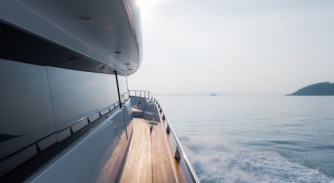
ISWAN reports rise in abuse
The seafarer welfare organisation has recently released alarming data suggesting that cases of abuse are on the rise
Crew
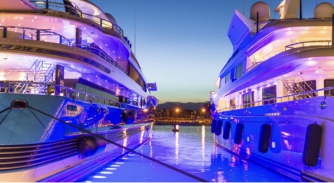
Retention on the rise
Kelsey Purse and Mark Charman of Faststream Recruitment dissect the results of their Superyacht Captain’s Survey
Crew
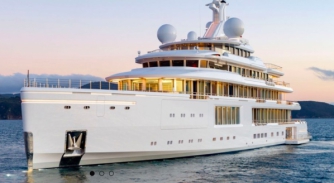
Burgess granted licence to pay sanctioned crew
After a protracted process, the crew of Luminosity and Alfa Nero will finally receive their pre-sanction salaries before the end of the year
Business

Crew background check service launches
SuperYacht References has launched its new platform for captains to source verified references and background checks for crew
Crew
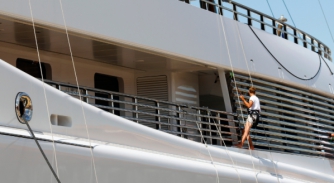
UKSA funds 80% of students
The Isle of Wight-based charity has supplied an average of £12,000 per student for its Superyacht Cadetship course
Crew

Size doesn’t fit all … but it should!
We speak candidly with current crew about their experiences of weight-based discrimination within the industry
Crew
Related news
ISWAN reports rise in abuse
1 year ago
Retention on the rise
1 year ago
Crew background check service launches
2 years ago
UKSA funds 80% of students
2 years ago
Size doesn’t fit all … but it should!
2 years ago
Quay Crew to include criminal background check
2 years ago
The reference request conundrum
2 years ago
NEW: Sign up for
SuperyachtNewsweek!
Get the latest weekly news, in-depth reports, intelligence, and strategic insights, delivered directly from The Superyacht Group's editors and market analysts.
Stay at the forefront of the superyacht industry with SuperyachtNewsweek



